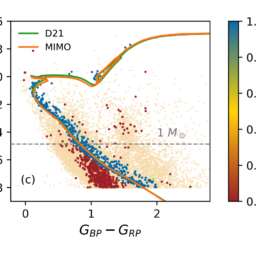Modeling open clusters in the CMD: binaries, mass function, and dynamical evolution
Lu LI (Shanghai Astronomical Observatory)
Tuesday 05/04/2022 @ 14:00, Remote talk
As cradles of stars and building blocks of galaxies, open clusters(OCs) encode valuable information about star formation and galaxy evolution. Therefore, precisely and robustly measuring the fundamental properties of OCs, including age, metallicity, distance, extinction, stellar mass function (MF), and binary properties, is of great importance. The field star contamination has long been a major obstacle. Here I will present a state-of-the-art Bayesian framework that models the color-magnitude diagram of an observed OC as a mixture of single stars, photometric unresolved binaries, and field stars. Its advanced statistics and comprehensive physical models enable the determination of all the OC properties simultaneously with unprecedented precision and permit exciting discoveries. This method enables us to build a comprehensive OC parameter catalog, in particular, including the MF and binary properties, which were unfeasible in conventional methods. Applying the method to Gaia data, we find clear evidence of dynamical evolution in OCs for the first time. Taking NGC3532 as the first example, we find that stars with smaller mass or in the inner region tend to have less low mass-ratio binaries. Using a larger OC sample, we unveil that the MF slope is evolving with cluster age: older OC has flatter MF (i.e., less low mass stars). This is because the dynamic encounters can destroy the low mass-ratio binaries (especially in the cluster center) and kick out low-mass stars. Finally, this method has a great potential to incorporate other stellar models or physical processes in OCs, such as stellar rotation or blue stragglers.

